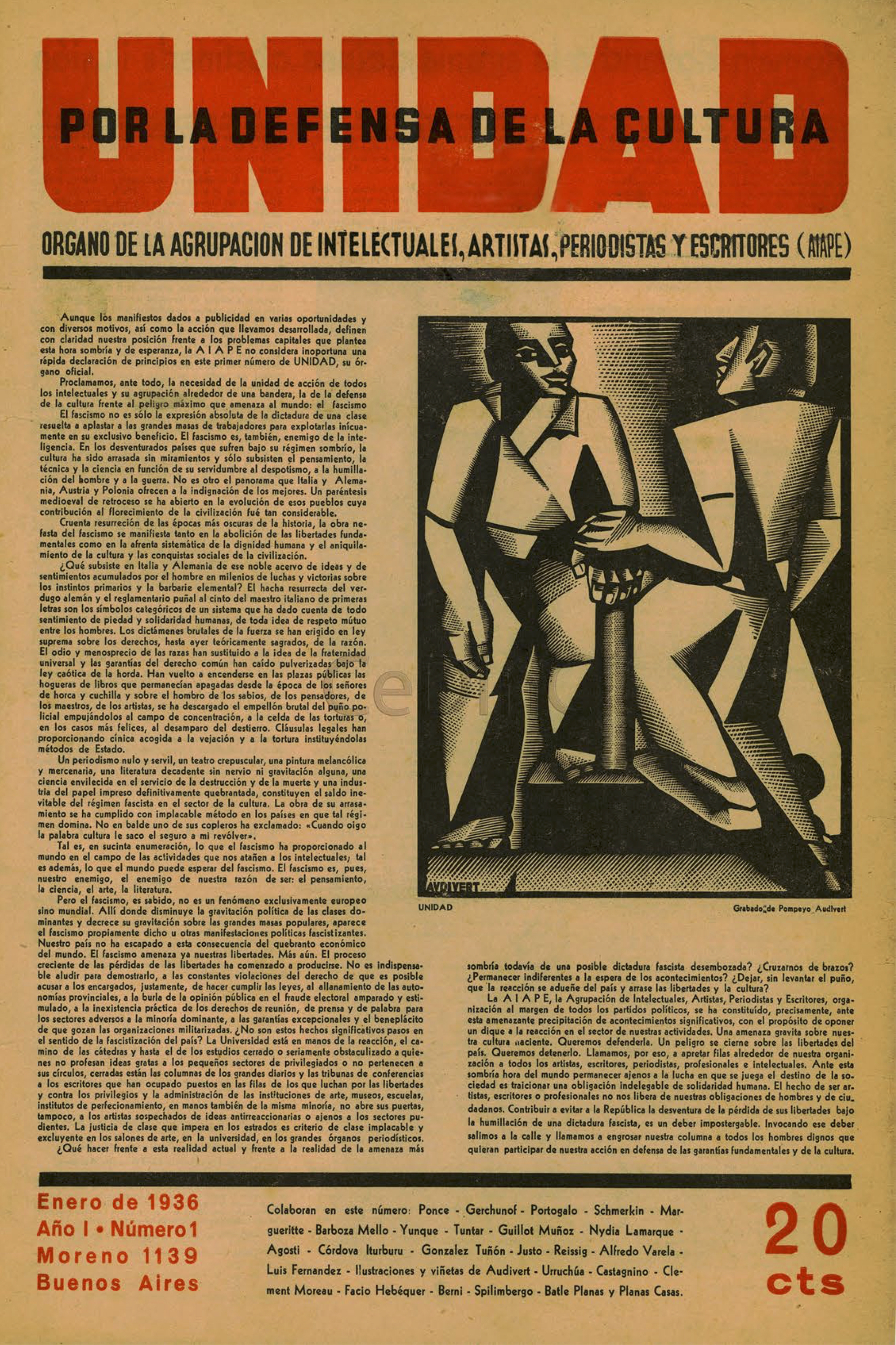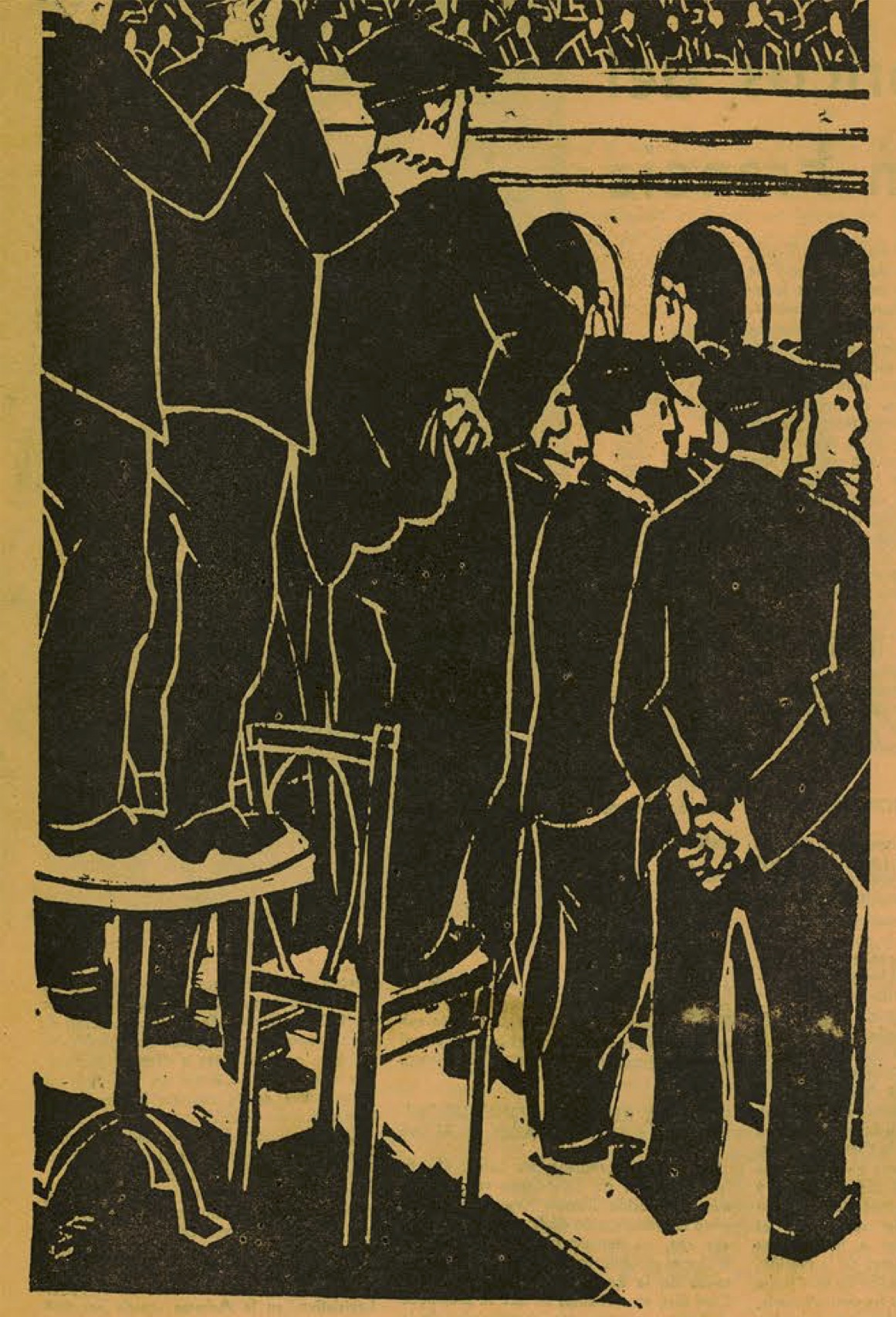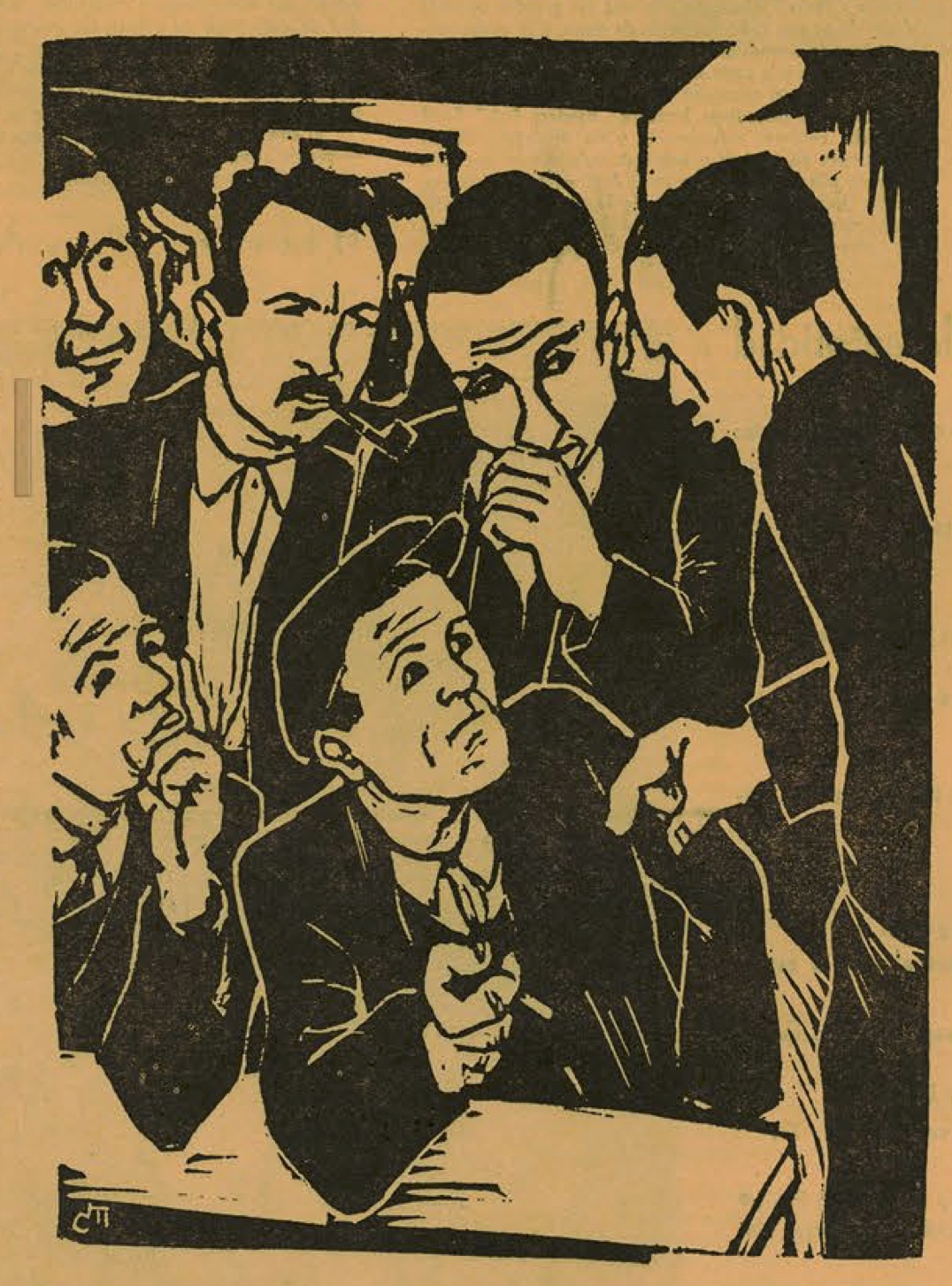Archive
Unidad
- Magazine
- Unidad
- Unity for the Defence of Culture Unidad por la Defensa de la Cultura
- Agrupación de Intelectuales, Artistas, Periodistas y Escritores (AIAPE)
- 01-1936
- 01-1938
Tabloid of 20 pages long
Calle Moreno 1139, Buenos Aires (editorial office).
- Spanish
38 cm.
- Buenos Aires (AR)
From 1936, the anti-fascist movement in Argentina found one of its most consistent opinion platforms in the magazine Unidad, organ of the Association of Intellectuals, Artists, Journalists and Writers (AIAPE).
Word Count: 29

Luis Seoane, Fascimo, cover of Unidad por la Defensa de la Cultura, no. 2, September 1937. CeDInCI, Buenos Aires. 
Pompeyo Audivert, Unidad, cover of Unidad por la Defensa de la Cultura, no. 1, January 1936. CeDInCI, Buenos Aires. 
Clément Moreau, engraving printed in Lamarque, Nydia. "Mitin de Frente Unico en París." Unidad por la Defensa de la Cultura, no. 1, January 1936. 
Clément Moreau, engraving printed in Lamarque, Nydia. "Mitin de Frente Unico en París." Unidad por la Defensa de la Cultura, no. 1, January 1936. Cane, James. “‘Unity for the Defense of Culture’: The AIAPE and the Cultural Politics of Argentine Antifascism, 1935–1943.” The Hispanic American Historical Review, vol. 77, no. 3, August 1997, pp. 443–482, doi: https://doi.org/10.1215/00182168-77.3.443. Accessed 23 April 2021.
Mendiola, Pedro. “La revista ‘Unidad por la Defensa de la Cultura’.” Río de la Plata, no. 29–30, 2006, pp. 307–318.
Pasolini, Ricardo. “El Nacimiento De Una Sensibilidad Política. Cultura Antifascista, Comunismo y Nación En La Argentina: Entre La AIAPE y El Congreso Argentino De La Cultura, 1935-1955.” Desarrollo Económico, vol. 45, no. 179, October–December 2005, pp. 403–433. JSTOR, www.jstor.org/stable/3655905. Accessed 14 April 2021.
Word Count: 95
Centro de Documentación e Investigación de la Cultura de Izquierdas (CeDInCI), Buenos Aires, http://cedinci.org/.
Word Count: 18
- Buenos Aires
- Laura Karp Lugo. "Unidad." METROMOD Archive, 2021, https://archive.metromod.net/viewer.p/69/2950/object/5140-11009903, last modified: 12-05-2021.
-
Pompeyo AudivertEngraverIllustratorBuenos Aires
Spanish-born Pompeyo Audivert migrated to Buenos Aires in 1911. He specialized in engraving, mastering its technique to the point of becoming a central figure in the local artistic field.
Word Count: 28
Agrupación de Intelectuales, Artistas, Periodistas y Escritores (AIAPE)AssociationBuenos AiresThe Agrupación de Intelectuales, Artistas, Periodistas y Escritores – AIAPE (Association of Intellectuals, Artists, Journalists and Writers) was a main association that helped migrants integrate into Buenos Aires’ cultural life.
Word Count: 30
Clément MoreauGraphic ArtistBuenos AiresGerman-born Clément Moreau had to exile to Buenos Aires due to his political activism. There, he was well integrated into the artistic milieu and published his caricatures in many publications.
Word Count: 31
Luis SeoanePainterMuralistIllustratorLawyerBuenos AiresLuis Seoane is an artist mainly known for his murals, paintings and illustrations. He spent his childhood and youth in Galicia, before settling in Buenos Aires in 1936.
Word Count: 27